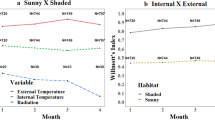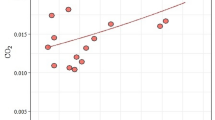Abstract
THE nest-building habits of a social wasp, Ropalidia variegata (Smith) were closely observed at the Indian Statistical Institute, Calcutta, from November 1963 to July 1965. Each nest is constructed largely on the lower side of a leaf, to which it is attached by a stiff and rather brittle pedicel, which is continuous with the first cell. The remaining cells of the nest, arranged in vertical rows1,2, hang almost vertically from the first cell, the second cell being placed about 45° to the right or left of the line of gravity of the first cell (Fig. 1).
This is a preview of subscription content, access via your institution
Access options
Subscribe to this journal
Receive 51 print issues and online access
$199.00 per year
only $3.90 per issue
Buy this article
- Purchase on Springer Link
- Instant access to full article PDF
Prices may be subject to local taxes which are calculated during checkout
Similar content being viewed by others
References
van der Vecht, J., Zool. Verhandel., No. 57, 1 (1962).
Yoshikawa, K., Nature and Life in Southeast Asia, 3, 291 (1964).
Rao, C. R., Advanced Statistical Methods in Biometric Research (J. Wiley and Sons Inc., New York, 1952).
Davis, T. A., Symp. Psychology, Ahmedabad (in the press, 1966).
Author information
Authors and Affiliations
Rights and permissions
About this article
Cite this article
DAVIS, T. Nest-structure of a Social Wasp varying with Siting of Leaves. Nature 210, 966–967 (1966). https://doi.org/10.1038/210966a0
Issue Date:
DOI: https://doi.org/10.1038/210966a0
Comments
By submitting a comment you agree to abide by our Terms and Community Guidelines. If you find something abusive or that does not comply with our terms or guidelines please flag it as inappropriate.



